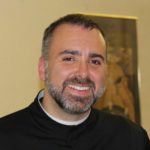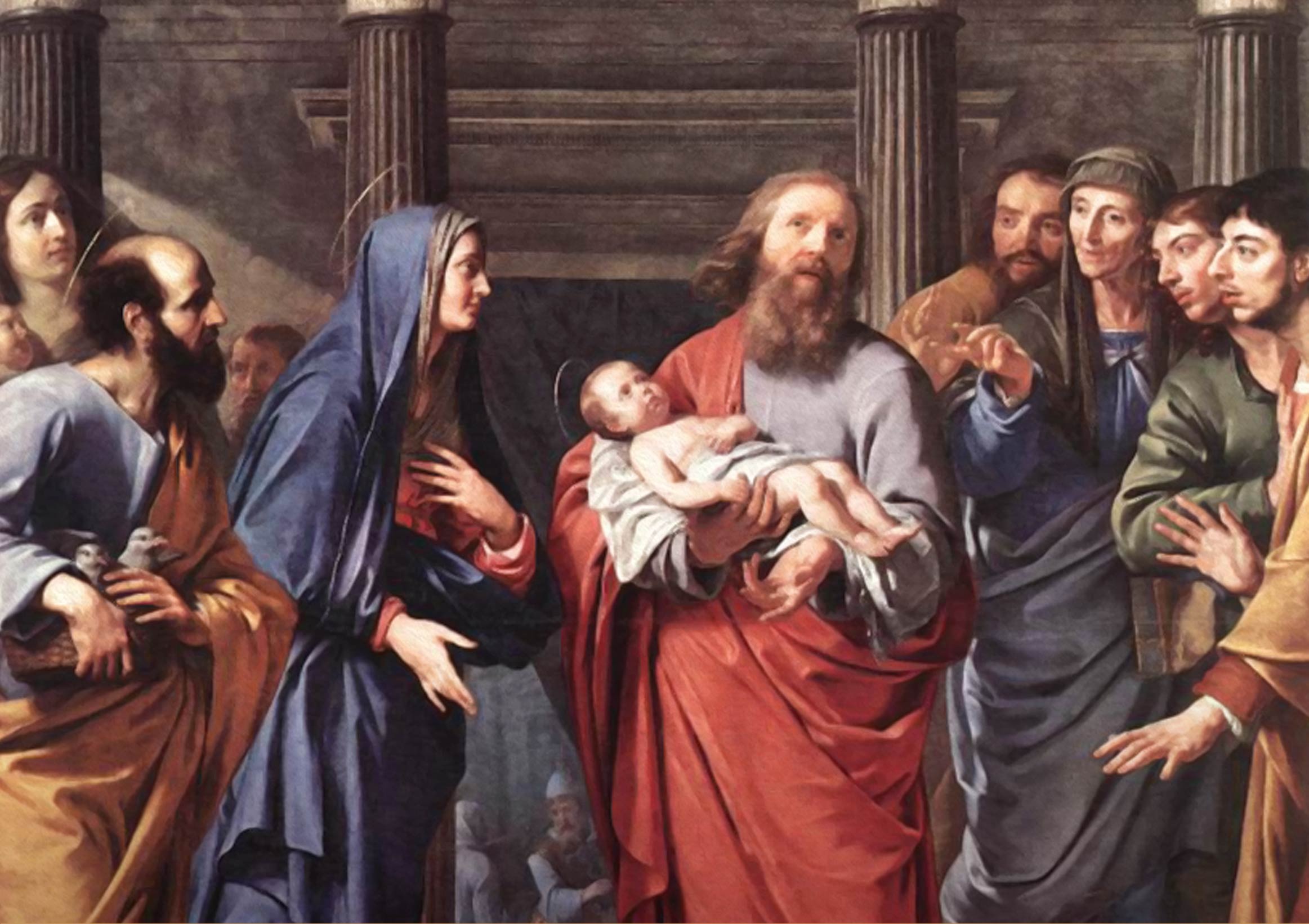 St. Luke tells us that Mary and Joseph, in keeping with the Law of Moses, presented the Child Jesus to God in the Temple in Jerusalem 40 days after his birth. This would also have been the time of Mary’s ritual purification following the birth of her child. We read that they offered to God the sacrifice of poor people: a pair of turtledoves or young pigeons. Simeon and Anna, elderly prophets, received the grace of seeing the longawaited Messiah. All of these mysteries are woven together in the Feast of the Presentation, which is a sort of “little Christmas” marking the end of our reflections on the Nativity and Epiphany of the Lord.
St. Luke tells us that Mary and Joseph, in keeping with the Law of Moses, presented the Child Jesus to God in the Temple in Jerusalem 40 days after his birth. This would also have been the time of Mary’s ritual purification following the birth of her child. We read that they offered to God the sacrifice of poor people: a pair of turtledoves or young pigeons. Simeon and Anna, elderly prophets, received the grace of seeing the longawaited Messiah. All of these mysteries are woven together in the Feast of the Presentation, which is a sort of “little Christmas” marking the end of our reflections on the Nativity and Epiphany of the Lord.
There are three elements of this feast that are worth considering: On the Feast of the Presentation of the Lord, we reflect on the unique way God chose to free the world from sin and death. The texts of the Mass weave together themes and images from the Old and New Testaments to help us enter more fully into mystery of this child who has been born for us. The second reading of the Mass reminds us that by sending His Son, God has given His new chosen people (i.e., the Church) a high priest who is able to complete and perfect the sacrifices of the old covenant by offering his very self.
So firstly, on this day the Church celebrates the entrance of Christ, the new high priest, into his Temple. The sacrifice of this priest will be offered on a cross, and the gifts that he’ll offer will be his own flesh and blood.

Secondly, we are invited to take part in an ancient tradition that comes to us from the Eastern churches. Early on, this feast was known as the meeting of Jesus and Simeon, and it was marked by a procession with lights to celebrate “the light of revelation to the nations.” This custom was adopted by the Roman Church, and the blessing of candles remains an important ritual for this day. We find this image of light in both the first reading and the Gospel.
The Canticle of Simeon, which we hear proclaimed in the Gospel and which is at the heart of the Church’s prayer on this feast, is prayed each evening during Compline, the church’s official night prayer. In this hymn, we join the old man, Simeon, in recognizing that the infant he held in his arms is the light and the Promised One who would bring true and lasting freedom to God’s people.
Simeon stands as a symbol of Israel’s watching and waiting in a time when God’s chosen people were being oppressed by the conquering Romans. In Simeon’s song of praise, we find a faith that speaks to us of a Presence that is stronger than death and darkness. When we may feel the emptiness that comes when hope seems far away, Henri Nouwen looks to Simeon as a witness:
“In that emptiness, God’s unconditional love could be sensed and we could say what the old Simeon said when he took the Christ child in his arms: ‘Now, Master, you can let your servant go in peace as you have promised.’ There, in the midst of dreadful emptiness, was complete trust, complete peace, and complete joy. Death no longer was the enemy. Love was victorious.” (from “The Return of the Prodigal Son”)
Thirdly, we are invited to stand with Mary in praise and adoration. As St. Sophronius of Jerusalem reminds us,
“The Mother of God, the most pure Virgin, carried the true light in her arms and brought him to those who lay in darkness. We too should carry a light for all to see and reflect the radiance of true light as we hasten to meet him.”(from the “Office of Readings for the Presentation of the Lord”)
The example of Mary “carrying a light” is an invitation for each of us to carry the light of faith that burns within our hearts and minds into a darkened world where so many are still looking for the light and warmth of hope and love that can only come from this Holy Child.
 In the end, the Feast of the Presentation of the Lord is an invitation for us to reflect on who this Child is and to help us make a connection between the mystery of Christmas and the saving work of Jesus embodied in the fullness of the Paschal Mystery. As the preface for the feast reminds us, this Child is truly “the glory of Israel and the light of the nations.”
In the end, the Feast of the Presentation of the Lord is an invitation for us to reflect on who this Child is and to help us make a connection between the mystery of Christmas and the saving work of Jesus embodied in the fullness of the Paschal Mystery. As the preface for the feast reminds us, this Child is truly “the glory of Israel and the light of the nations.”
A Benedictine monk for nearly 11 years, Br. Silas Henderson, SDS, is an author, retreat leader, and catechist, and former managing editor of Deacon Digest Magazine and Abbey Press Publications. You can find more of Br. Henderson’s blogs at www.fromseason2season.blogspot.com.